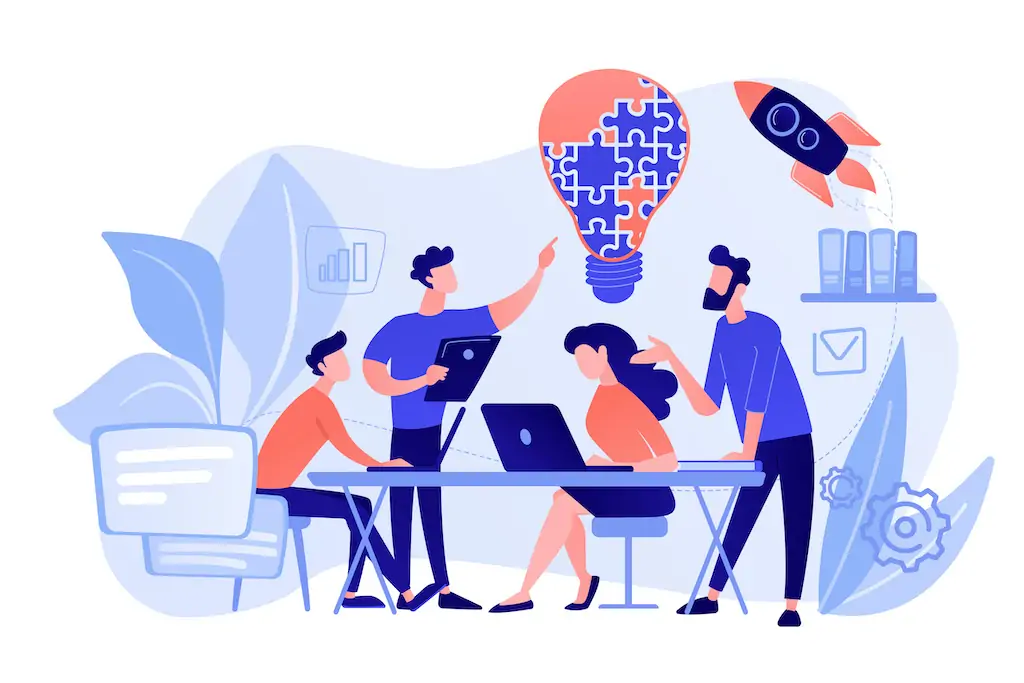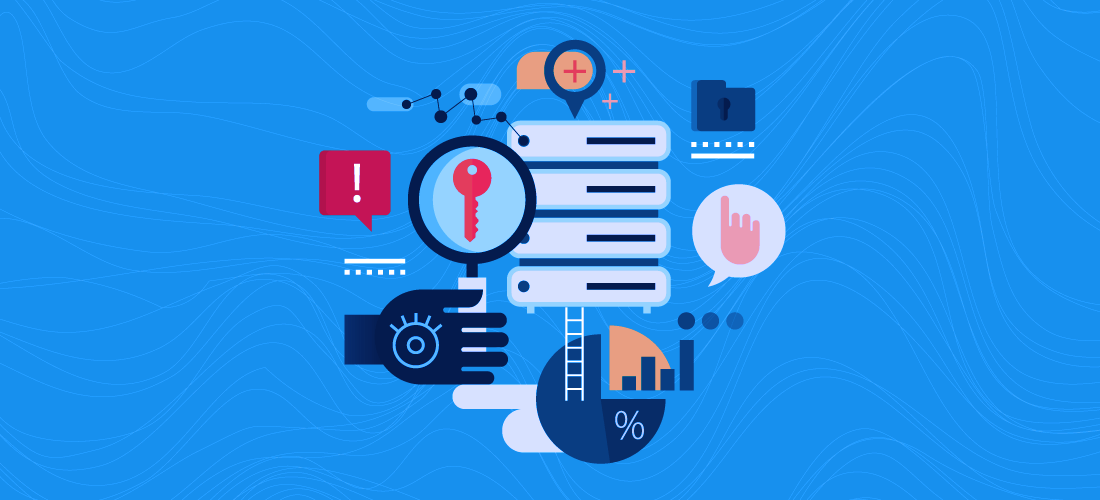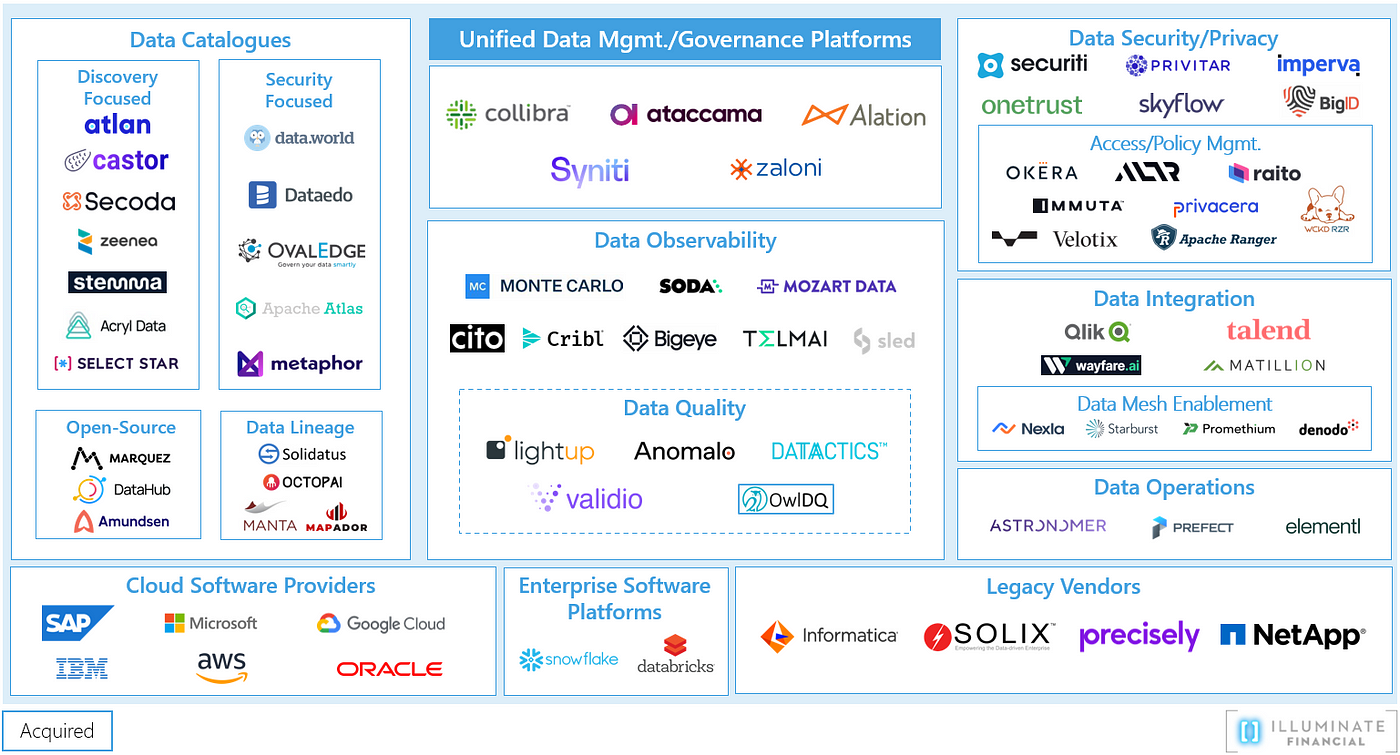If you’re a business leader, IT professional, or data enthusiast looking to optimize your organization’s data governance processes in 2025, this article will equip you with everything you need to know about data governance software. In today’s data-driven world, understanding this software can profoundly impact your organization’s efficiency and security.
Understanding Data Governance Software
Data governance software is designed to help organizations efficiently manage their data policies and procedures. These tools empower enterprises to ensure data quality, security, privacy, and compliance across all their data assets.
What is Data Governance?
At its core, data governance refers to the exercise of authority and control over the management of data assets. It involves processes, roles, policies, standards, and metrics that govern the effective and efficient use of information throughout an organization.
In 2025, data governance has become more critical than ever, with the exponential growth of data and the increasing complexity of regulatory landscapes. Organizations are now dealing with diverse data sources, including IoT devices, social media, and AI-generated data, making robust governance essential.
Why is Data Governance Important?
- Data Quality and Precision: Ensures that data is accurate, consistent, and reliable.
- Regulatory Compliance: Helps organizations comply with data-related regulations such as GDPR, HIPAA, CCPA, and newer regulations introduced in 2025.
- Operational Efficiency: Streamlines data management processes, reducing redundancy and increasing efficiency.
- Security and Privacy: Protects sensitive information from data breaches and unauthorized access.
- Data Monetization: Enables organizations to identify and leverage valuable data assets for new revenue streams.
As we navigate through 2025, the importance of data governance has only grown. With the rise of edge computing and 5G networks, organizations are dealing with more real-time data than ever before, making efficient governance crucial for maintaining competitive advantage.
Key Features of Data Governance Software
Data governance software typically offers a range of features to help organizations maintain robust data governance frameworks. In 2025, these features have evolved to meet the changing needs of businesses and technological advancements.
Data Catalog
A data catalog is a centralized repository that allows users to discover and leverage data across the organization easily. It includes metadata that provides insights into the data’s origin, use, and structure.
Modern data catalogs in 2025 now incorporate AI-driven recommendations, suggesting relevant datasets to users based on their roles and previous data interactions. This feature significantly enhances data discovery and utilization across the organization.
Data Lineage
Understanding the data’s life cycle and its journey within the organization is crucial. Data lineage capabilities help track data from its origin to its current state, offering insights into data transformations and processes.
In 2025, data lineage tools have become more sophisticated, offering real-time tracking and visual representations of data flow. This advancement allows for quicker identification of data discrepancies and more efficient troubleshooting.
Data Stewardship
This feature supports roles and responsibilities related to data management and governance. It helps ensure accountability and ownership of data policies and controls.
The latest data governance software includes AI-assisted data stewardship, which can automatically identify potential data stewards based on their interaction with and knowledge of specific datasets. This feature has significantly streamlined the process of assigning data ownership and responsibility.
Compliance Management
Automated compliance management tools within data governance software facilitate adherence to regulations by providing audit trails, policy templates, and compliance assessment modules.
In 2025, these tools have become even more critical with the introduction of stricter global data protection laws. Many now include predictive compliance features that can forecast potential compliance issues based on planned data operations.
Data Quality Management
Ensuring data quality is a core component of data governance. Modern data governance software includes robust data quality management features that can automatically detect and correct data inconsistencies, duplications, and errors.
These tools now leverage machine learning algorithms to continuously improve their data quality checks, adapting to new data patterns and potential issues as they arise.
Benefits of Implementing Data Governance Software
Leveraging data governance software can lead to significant benefits for an organization. In 2025, these benefits have become even more pronounced as data continues to play a central role in business operations and decision-making.
Enhancing Decision-Making Capabilities
With a consistent framework offered by data governance software, businesses can make data-driven decisions with greater confidence and accuracy. In 2025, this benefit has been amplified by the integration of advanced analytics and AI within data governance platforms.
For instance, a major retail chain reported a 30% improvement in inventory management decisions after implementing comprehensive data governance software, leading to significant cost savings and improved customer satisfaction.
Increasing Operational Efficiency
Automating data governance processes minimizes manual effort and reduces the risk of errors, leading to more streamlined operations. In the current landscape, where agility is key to business success, this efficiency gain can provide a significant competitive advantage.
A case study from a leading financial institution showed that after implementing data governance software, they reduced the time spent on data-related tasks by 40%, allowing their teams to focus more on strategic initiatives.
Risk Mitigation
By enforcing data policies and maintaining data quality control, the risk of data breaches and compliance violations is minimized. This is particularly crucial in 2025, with the average cost of a data breach now exceeding $5 million.
Organizations using robust data governance software have reported up to a 50% reduction in data-related security incidents, showcasing the critical role these tools play in risk management.
Boosting Data Democratization
With the use of data catalogs, data becomes more accessible to stakeholders, thus fostering a culture of data-driven decision-making throughout the organization. This democratization of data has become a key differentiator for successful businesses in 2025.
Companies that have successfully implemented data governance software have seen a 70% increase in cross-departmental data utilization, leading to more innovative solutions and improved collaboration.
Best Practices for Utilizing Data Governance Software
To maximize the benefits of data governance software, consider these best practices when implementing and using these tools in your organization.
Define Clear Goals and Objectives
Establish specific, measurable goals for what you wish to achieve with data governance software, such as improved data quality or enhanced compliance. In 2025, it’s essential to align these goals with your organization’s overall digital transformation strategy.
For example, a healthcare provider might set a goal to reduce data-related compliance violations by 90% within the first year of implementing data governance software.
Assign Roles and Responsibilities
Identify data stewards, define their roles, and ensure there is accountability for data management and governance tasks. In the current landscape, it’s crucial to have a Chief Data Officer (CDO) or equivalent role to oversee the data governance initiative.
Consider creating a data governance committee that includes representatives from various departments to ensure a holistic approach to data management.
Train Stakeholders
Ensure all users understand how to use the software effectively. Provide training sessions and resources to empower employees with the necessary skills. In 2025, this often includes leveraging virtual reality (VR) training modules for more engaging and effective learning experiences.
Regular « data literacy » workshops can help maintain a high level of competency across the organization. Some companies have reported a 50% increase in data governance software adoption rates after implementing comprehensive training programs.
Monitor and Review
Regularly review data governance processes and the software’s performance. Adapt policies and practices based on insights gained from these evaluations. In 2025, AI-powered analytics tools can provide real-time insights into the effectiveness of your data governance practices.
Consider conducting quarterly data governance audits to ensure ongoing alignment with organizational goals and regulatory requirements.
Selecting the Right Data Governance Software
When choosing the right tool for your organization in 2025, consider these factors:
Compatibility and Integration
Ensure the software can integrate seamlessly with your existing infrastructure and systems. This is particularly important in 2025, where many organizations are dealing with hybrid cloud environments and legacy systems.
Look for data governance software that offers robust APIs and pre-built connectors to popular data platforms and tools. This can significantly reduce implementation time and costs.
Scalability
Choose a solution that can grow with your organization as your data governance needs expand. In 2025, with the exponential growth of data, scalability is more critical than ever.
Consider cloud-based solutions that offer flexible scaling options to accommodate sudden spikes in data volume or user numbers.
Usability
Select software with a user-friendly interface and helpful support resources. In the current landscape, look for solutions that offer AI-assisted interfaces and natural language querying capabilities to enhance user adoption.
Some leading data governance software now includes customizable dashboards and mobile apps, allowing users to access and manage data governance tasks on-the-go.
Vendor Reputation and Support
Research the vendor’s track record, read customer reviews, and consider conducting a trial before committing to a purchase. In 2025, also consider the vendor’s commitment to innovation and their roadmap for future enhancements.
Look for vendors that offer comprehensive support packages, including 24/7 technical assistance and regular software updates to address emerging data governance challenges.
Future Trends in Data Governance Software
As we look beyond 2025, several trends are shaping the future of data governance software:
AI-Driven Governance
Artificial Intelligence is becoming increasingly integrated into data governance tools, offering predictive analytics, automated policy enforcement, and intelligent data classification. This trend is expected to significantly reduce manual efforts in data governance processes.
Blockchain for Data Lineage
Blockchain technology is being explored as a means to provide immutable, transparent data lineage. This could revolutionize how organizations track and verify the origin and transformations of their data.
Edge Computing Governance
With the rise of edge computing, data governance software is evolving to manage and govern data at the edge, ensuring consistency and compliance across distributed data environments.
Quantum-Safe Data Governance
As quantum computing advances, data governance software is beginning to incorporate quantum-safe encryption and security measures to protect against future threats to data integrity and privacy.
Conclusion
Data governance software is not just a technological choice; it’s a strategic decision that can transform how an organization manages, protects, and utilizes its data assets. By understanding and integrating these tools into your operations, your organization can enhance data quality, ensure compliance, and drive operational efficiency.
As we navigate through 2025 and beyond, the importance of robust data governance will only continue to grow. Organizations that leverage advanced data governance software will be better positioned to extract value from their data, maintain regulatory compliance, and gain a competitive edge in an increasingly data-driven world.
Whether you are just beginning your data governance journey or looking to optimize existing processes, the right software can be the key to unlocking new opportunities in the digital age. By following the best practices outlined in this guide and staying abreast of emerging trends, you can ensure that your organization remains at the forefront of data governance excellence.
Remember, effective data governance is an ongoing process. Regularly review and update your data governance strategies to align with evolving business needs and technological advancements. With the right approach and tools, you can turn your data into a powerful asset that drives innovation, efficiency, and growth in your organization.


